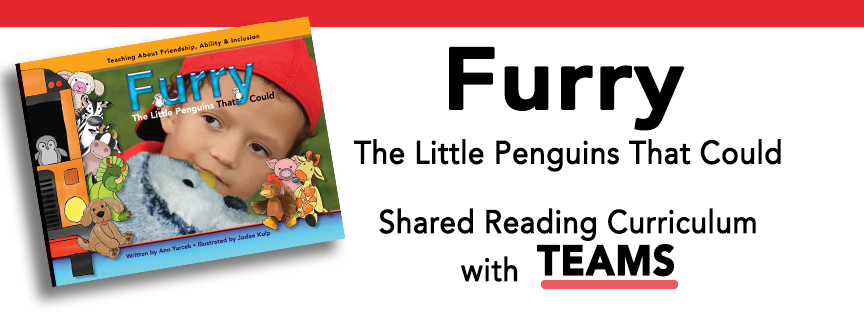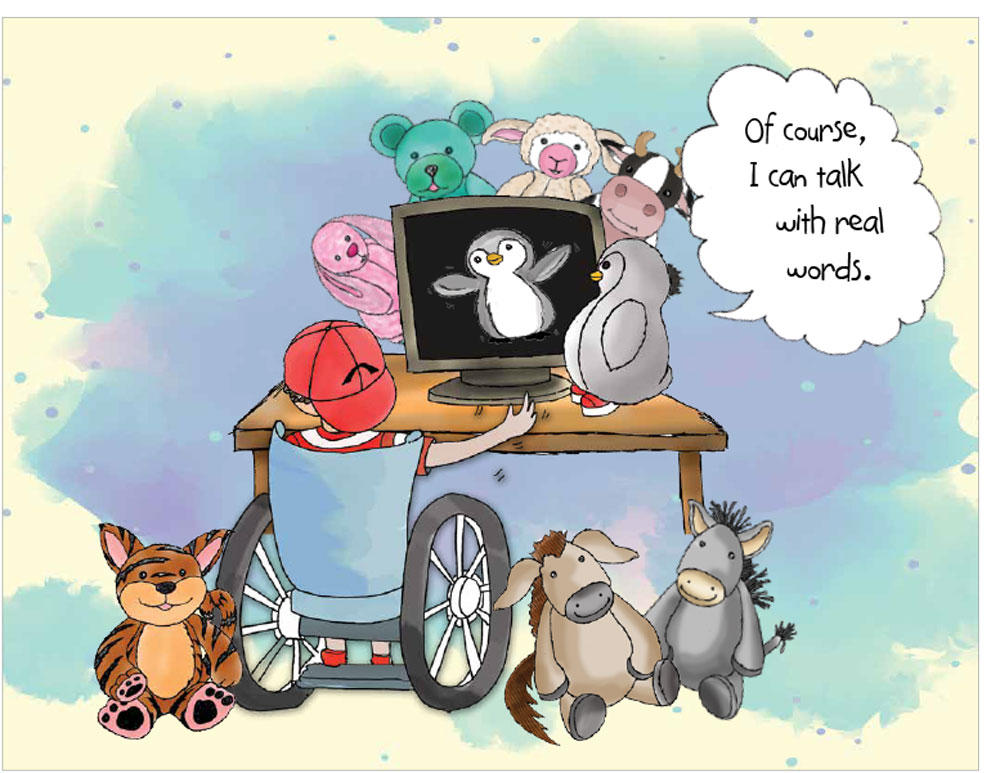That’s right 23 Preschool Words!
A study of children in a childcare setting functioning at age-appropriate developmental levels showed that the following 23 words accounted for 96% of the language used over a three day period.
23 Preschool Words in descending columns of the frequency of use:
| I | the | that | you | here | some |
| no | want | a | what | more | help |
| yes/yea | is | go | on | out | all done |
| my | it | mine | in | off | finished |
TEACHER CHALLENGE:
Shared Reading with non-verbal
emergent readers.
Augmentative and Alternative Communication (AAC) is an increasingly prevalent option for individuals with delays or disorders in their expressive communication abilities. For school-aged children, the use of research-based language selection and well-designed AAC systems are integral to academic success.
To read more on this complex and unique study download The Dynamic Learning Maps Core Vocabulary Overview developed by the DLM Professional Development Team at The University of North Carolina at Chapel Hill https://www.med.unc.edu/ahs/clds/files/2018/09/vocabOverview.pdf
Note: These core boards should never replace a well constructed currently available device/system.
RESOURCES FOR YOUR CLASSROOM
The final 36 core words have been researched by the Center for Literacy and Disability Studies and reflect words that are most commonly used in a classroom setting. In addition, Furry adds words that allow class participation for all children. Furry – The Little Penguins That Could Curriculum uses the 36 ACC Project Core cards as indicators, you are free to use any of the many varieties of cards. A full range of ACC free downloads are available at: http://corevocabulary.weebly.com/resources.html
For example, Chapter One in Furry The Little Penguins That Could Curriculum begins with learning the DLM Core Vocabulary word “I’ and for fun Furry added “penguin”. Children learn best by playing together and we have designed this curriculum so almost any child can participate in shared reading.
Furry The Little Penguins That Could
curriculum utilizes the work of the
Center for Literacy and Disabilities Studies.
The DLM Core Vocabulary Project was initiated to determine the vocabulary that is necessary for students with significant cognitive disabilities to engage, learn, and demonstrate knowledge in an academic environment. Instead of identifying every possible word, the goal was to identify and prioritize the smallest set of required words.
The first 40 words in the DLM Core Vocabulary:
| 1 | I | like | not | want |
| 2 | help | it | more | different |
| 3 | who | she | you | he |
| 4 | where | up | on | in |
| 5 | me | make | get | look |
| 6 | what | need | are | is |
| 7 | some | put | all | this |
| 8 | don’t | that | go | do |
| 9 | when | finished done | can | here |
| 10 | open | turn | stop | over |
The first set of 40 words was designed to create groupings of words that could help students with both communication and language growth. The words are organized in groups of 4 that lend themselves to expression and modeling of language usage.
FREE WEBINARS TO LEARN MORE!
Try out the FREE Communication Training Series Webinars
https://www.angelman.org/resources-education/

